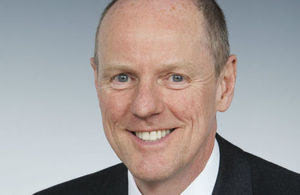Continued success in parents securing their top picks of school

More than nine out of 10 parents got one of their top three choices of primary or secondary school for their children this year.
The success in the number of parents securing one of their top three choices comes despite an increase in the overall school population of over 635,000 pupils since 2010, and a rise of over 20,000 applications at secondary level this year alone.
Stats published today from the Department for Education show that 97.5% of primary, and 93% of secondary school children, secured a place at one of their top-three picks of school in 2019.
School Standards Minister Nick Gibb said:
Wherever they live and whatever their background, children deserve the best in education. Since 2010 we have created more school places and seen school standards rise, meaning there is a greater opportunity for pupils across the country to go to a good or outstanding school.
This means that, despite rising pupil numbers and the highest number of applications at secondary level for twelve years, the vast majority of parents sending their children to school this September received one of their top three preferences of either primary or secondary school.
Our school system has improved beyond recognition in the last nine years, which means that even the small minority of parents who didn’t get one of their top choices this year can feel confident their child will still get a world-leading education.
To ensure every child has access to a good school place, the Government is on track to create a million new school places by the end of this decade – the largest increase for at least two generations.
Standards have also risen since this time, with 1.9 million more children attending good or outstanding schools compared to 2010, representing 85% of children, compared to just 66% in 2010, and that is in part down to our reforms.
Last summer, more children across the country met the expected standard at the end of primary school in all of reading, writing and mathematics – totalling 64% of pupils in 2018 compared to 61% in 2017.
This follows the introduction of the Government’s phonics screening check in 2012, with 163,000 more 6-year-olds on track to become fluent readers compared to seven years ago, and England’s recent rise up the international PIRLS rankings puts the success of the Government’s reforms on a global scale.
Alongside progress in children’s reading abilities, the teaching of maths in primary school has been transformed, in line with the principle of the maths ‘mastery’ pedagogy. This technique of teaching is successfully practised by world leaders in mathematics, Shanghai and Singapore, and is now being introduced to schools in England.
Thanks to £41 million investment there are already over 2,500 schools across the country involved in this approach, and the Government recently announced an additional £27 million to further expand the programme to reach 11,000 primary and secondary schools in total by 2023.











Responses